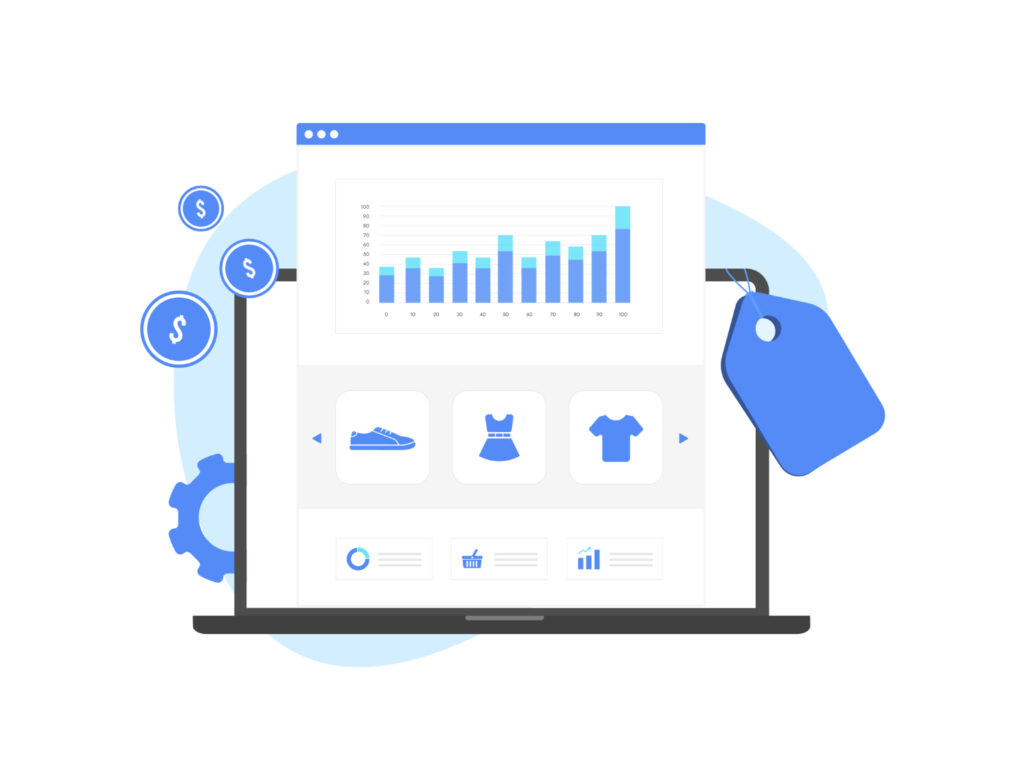If you’re like me, you’re always looking for ways to boost your site’s SEO. One tool I’ve found invaluable is Google Search Console. It’s a free service from Google that helps you monitor, maintain, and troubleshoot your site’s presence in Google Search results.
You don’t need to sign up for Search Console to be included in Google Search results. But doing so can help you understand how Google views your site and optimize its performance in search results. It’s not just for SEO specialists or web developers; whether you’re a hobby blogger, business owner, or app creator, Google Search Console has something to offer you.
In this article, I’ll share my insights on how to use Google Search Console to improve your SEO. I’ll guide you through the basics and give you some advanced tips to get the most out of this powerful tool.
Understanding Google Search Console
So, what exactly is Google Search Console? It’s a free tool offered by Google that helps you monitor, maintain, and troubleshoot your website’s presence in Google Search results. It doesn’t matter if you’re a business owner, SEO expert, publisher, or a site administrator, it’s a valuable utility that should be in your digital toolbox.
How does it Work?
Google Search Console facilitates your interaction with Google in two significant ways. Firstly, it gathers data about your website’s performance in Search, while also identifying issues that need fixing. Secondly, Google Search Console is your messaging channel with Google, alerting you when there’s something important you need to know.
- Performance Metrics: Google Search Console reports on the performance of specific URLs or websites as a whole. It can break down data by device, search query, and geographic location, providing insight on where your audience is coming from and what they’re looking for.
- Search Queries: It shows which queries cause your site to appear in search results. This information can help guide your keyword strategy, improving your SEO over time.
- Coverage Issues: The Console alerts you to any issues Googlebot encounters when crawling and indexing your site. This can be invaluable for keeping your site in peak SEO shape.
- Mobile Usability: Today, mobile-friendly sites are more important than ever. Google Search Console alerts you to any issues impacting mobile usability, ensuring you don’t lose visitors from this crucial source.
Next, we’ll dive deeper into each feature, highlighting how to make the most out of Google Search Console for your SEO endeavors.

Setting up Google Search Console
Stepping into the world of Google Search Console, I’ve realized how it’s a goldmine of useful data that can supercharge my SEO efforts. Like many, you might be wondering, “How do I start using this amazing tool?” Well, let’s embark on this journey together. Here’s an easy guide on getting started.
Firstly, you’ll need a Google Account to access the Search Console. If you don’t already have one, you’ll need to create one. Once you’re logged in, head over to Google Search Console and click on ‘Start Now’.
Next, you’ll need to add and verify your website. You can add your website to your account by typing in your website’s URL or by using the Domain name provider method. I tend to prefer the Domain name provider method as it provides you with the most data.
To verify your site, Google provides multiple options – HTML file upload, HTML tag, Domain name provider, Google Analytics tracking code, or Google Tag Manager container snippet. This might sound like a lot, but trust me, it’s easier than it sounds.
Once you’ve made your selection, Google will provide you with a unique code. If you’ve chosen the HTML tag method for instance, the code will need to be inserted into your website’s HTML code, specifically in the section.
Pro Tip: Do not remove this code or let it get replaced. Removing this code could lead to your site losing its verification status.
After installation, head back to the search console and hit the ‘Verify’ button. Congratulations! Your site is now added to Google Search Console and you’re ready to harness its power to boost your SEO.
Hang on, because in the next section, we’ll dive deeper into using Google Search Console to analyze and improve your site’s performance.
Monitoring Your Site Performance
Now that we’ve cleared the initial step of setup and verification, let’s delve into reaping the real benefits of Google Search Console. We’ll start by learning how to monitor website performance using this fantastic tool.
Google Search Console’s Performance Report is your best friend when it comes to analyzing your site’s SEO success. It gives a comprehensive view of your website’s visibility in Google’s search results. The report can show you information about clicks, impressions, click-through rate, and average position.
Clicks are the count of how often users clicked on your website in search results. Impressions represent the number of times a user saw a link to your site in search results. Average CTR or Click Through Rate is the percentage of impressions that resulted in a click. Finally, the average position shows where your website generally ranks in search results.
If you’re thinking that it sounds amazing, wait till you experience it. The data is highly actionable. For example, if your website’s average position is high but click-through rate is low, it’s a clue that although you’re showing up in results, users might not find your snippets attractive enough to click.
Moreover, you’re not limited to getting a high level overview. You can, in fact, use numerous filters available to dig deeper. You can filter by query, pages, countries, devices, search type, and dates. This allows you to identify specific areas to target for improvement.
Let’s take a real life scenario to understand better. You realize that from a specific country your website is getting numerous impressions but very few clicks. You can then delve into your website’s content and localization strategy for that particular region to better appeal to the audience.
We’ve only just scratched the surface of what’s possible with the Google Search Console’s performance report. The more you dive into it, the more insights you can extract that will help improve your website’s SEO ranking. The tool truly empowers you to refine your SEO strategies and reach your goals.
So if you haven’t started using the performance report in your SEO efforts, it’s high time that you do! Remember, an efficient use of data can make a significant difference to your SEO success. You’ll discover how to completely take control of your website’s performance metrics in a way that aligns perfectly with your specific SEO objectives.

Improving Site Visibility in Search Results
It’s crucial to recognize that making your website visible in search results is a key aspect of SEO. The Google Search Console’s Performance Report can aid you in achieving better visibility. You ask how? I’ll guide you through it.
First, start by examining the ‘Queries’ report, where you’ll find the terms users have used to discover your site. Yet the raw number of impressions isn’t your only interest. Take a look at your site’s average position for each query. Now that’s an interesting piece of information. It gives you an indication of where your site typically appears in search results and provides a way to measure the change over time.
As you scrutinize these data, keep an eye out for queries where your site has a lower-than-average click-through rate (CTR). A low CTR for a query might suggest that your site’s content doesn’t feel as relevant or attractive to the user.
Keep in mind that Google Search Console also allows you to filter by ‘Page’ and ‘Country’. This means you can see how a specific page performs or how your site’s visibility differs across various geographical regions.
Don’t overlook device type either. SEO isn’t just about desktop anymore. Mobile search, in many cases, is the majority source of traffic. So, dig into the ‘Device’ filter to see how you perform across different devices.
Lastly, by using the ‘Compare’ function, you can directly contrast different elements. For instance, you can compare your performance on mobile versus desktop, or compare performance between different pages or search terms.
Great! Now, turning this newfound information into action is the next step towards improving your site’s SEO. Utilizing the insights from Google Search Console’s Performance Report in the right way can help you increase your site’s visibility in search results. Who said improving SEO had to be difficult, right?
Advanced Tips for SEO Optimization
Now that we’ve established the basics, let’s dive into some more advanced tips for SEO optimization using Google Search Console.
Through the Links report, you can dive deeper into your link game. This feature allows you to see who links to your website. By examining top linked pages and top linking sites, you could start creating symbiotic relationships with other likeminded businesses, enhancing your digital presence.
What’s more, the Mobile Usability report is one tool you absolutely can’t overlook. In today’s mobile-driven world, it’s critical to ensure your site is mobile-friendly. This report helps you identify any potential mobile usability issues and fix them—improving user experience and boosting SEO efforts.
Remember, under the hood, lies the Crawl Stats Report. Ever wondered how Google’s web crawlers see your site? This report gives insight into crawl request history, which could be vital when observing how changes to your site affect crawler activity.
| Metrics | Purpose |
| Crawl Requests | Number of requests made by Google |
| Crawl Errors | Errors encountered during crawl |
| Crawl Stats | Report on overall crawl activity |
Moreover, keep an eye on the Core Web Vitals report. Site performance can dramatically affect your search ranking, and thanks to this report, you can assess how well your pages perform based on real, user-driven metrics.
Let’s not forget the Security Issues report. Nothing damages SEO like a compromised website. Keeping a keen eye on this report ensures your site is secure and reliable.
While exploring the various Google Search Console features, remember, data is the key. But only when that raw data is analyzed, interpreted, and integrated into your SEO strategy, can true progress be made. From identifying error fix priorities to bringing in traffic from all devices and countries, the console provides the power to turn data into actionable insights.
Thinking about SEO and data may seem intimidating, but trust me, you’ll get the hang of it. So, give these advanced tips a try and see how your visibility in search results gains momentum.
Conclusion
I’ve shared how Google Search Console can be a powerful tool for boosting your SEO. Leveraging reports like the Links, Mobile Usability, Crawl Stats, Core Web Vitals, and Security Issues can significantly enhance your site’s visibility. It’s about learning from these resources and applying the insights to optimize your SEO strategies. Remember, it’s not just about gathering data but making sense of it to improve your site’s performance and security. With Google Search Console, you’re equipped with the right tools to climb the search rankings. So, don’t wait. Start using Google Search Console today and see the difference it can make for your SEO.



